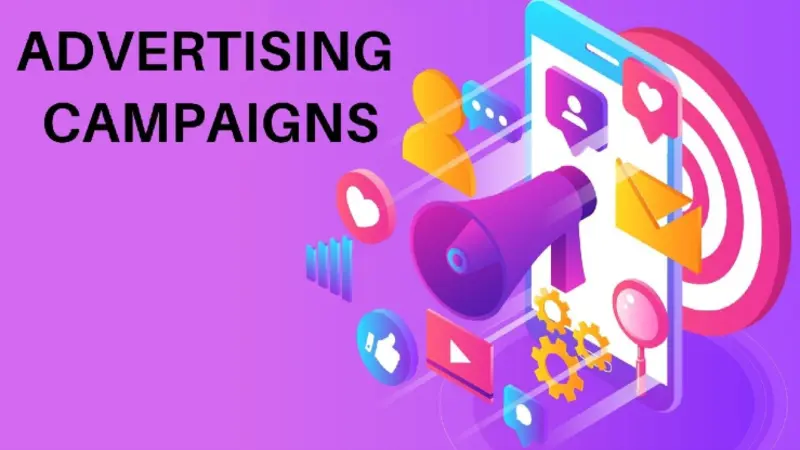The concept of Artificial Intelligence (AI) is changing the landscape of how companies can advertise their products. Due to the ability to process and interpret big data, AI is helping marketers be more successful and efficient in delivering advertising campaigns. This blog strives to explain how you should use AI to make your next ad campaign more efficient, more targeted, and more fruitful.
Harnessing AI in ad campaign optimization
Incorporating ai ad campaign technologies can dramatically enhance the effectiveness of advertising efforts. AI systems excel in analyzing consumer behavior, predicting trends, and automating decision-making processes. This capability allows marketers to deliver highly targeted ads, tailored to the preferences and behaviors of individual consumers, at a scale that manual processes simply cannot match.
Benefits of using AI in advertising campaigns
- Enhanced targeting:
AI’s ability to analyze vast amounts of consumer data such as demographics, interests, and past behaviors enables highly specific targeting. This precision ensures that each advertising message is tailored to resonate with your target audience, potentially increasing engagement rates and campaign effectiveness by ensuring ads are seen by those most likely to be interested in the product or service.
- Improved budget allocation:
AI optimizes budget expenditure by predicting the performance of various advertising channels and placements. It assesses numerous variables in real-time, including user engagement and conversion rates, to allocate funds where they are most likely to yield high returns. This strategic allocation not only maximizes the impact of each dollar spent but also reduces wastage in ad spends, enhancing overall campaign ROI.
- Dynamic creative optimization (DCO):
AI dynamically tests different versions of advertisements to determine the most effective elements. It can automatically adjust images, headlines, and CTAs based on real-time user responses. This continuous optimization process means that ads are constantly refined to improve engagement and conversions, ensuring that the campaign’s creative elements are always performance-driven.
- Real-time bidding (RTB):
AI enhances the efficiency of ad purchases by automating the bidding process in real-time advertising auctions. It evaluates the value of each ad impression as it becomes available, using sophisticated algorithms to bid competitively based on the likelihood of user engagement. This precision in bidding ensures that advertisers pay the optimal price for valuable ad spaces, maximizing exposure to targeted audiences.
- Predictive analytics:
Utilizing historical data and machine learning, AI forecasts future consumer behavior trends. This predictive capability allows marketers to anticipate market shifts and adapt their strategies accordingly. By staying one step ahead, businesses can tailor their campaigns to align with upcoming trends, positioning their brand advantageously as market dynamics evolve.
- Cross-platform integration:
AI can synchronize advertising efforts across multiple platforms, ensuring a unified brand message and seamless user experience. Whether a user interacts with a brand through social media, email, or a mobile app, AI ensures that all touchpoints are coherent and continuously optimized based on interactions from each channel. This holistic approach not only strengthens brand presence but also boosts the effectiveness of multichannel campaigns.
Steps to optimize your ad campaign with AI
- Define clear objectives:
Start by setting specific, measurable goals for your ad campaign. Knowing what you aim to achieve—be it increasing sales, generating leads, or improving brand recognition—guides the AI’s algorithms in targeting and decision-making. Clear objectives help tailor the AI’s output to your exact needs, ensuring that the technology works in alignment with your business goals.
- Gather and integrate data:
AI’s effectiveness is directly linked to the quality and breadth of data it can access. Compile data from diverse sources such as web analytics, CRM databases, social interactions, and customer feedback. Ensuring this data is integrated and accessible to your AI tools is crucial for developing a comprehensive understanding of your audience, which in turn enhances the accuracy of AI predictions and recommendations.
- Choose the right AI tools:
Select AI technologies that best suit your specific needs. This involves evaluating various AI platforms based on their functionality, compatibility with your existing systems, and their ability to scale with your business. Consider tools specialized in real-time bidding, predictive analytics, or creative optimization based on your campaign objectives and the complexity of tasks you need to automate.
- Monitor and adjust in real-time:
Utilize AI’s capability to monitor campaign performance continuously and make adjustments on the fly. This dynamic approach allows you to optimize ad spend and targeting strategies based on immediate feedback and performance metrics. It’s about staying agile—quickly capitalizing on what works and rectifying what doesn’t to maximize campaign effectiveness.
- Measure and analyze performance:
After the campaign concludes, leverage AI to deep dive into performance data against your initial objectives. Use AI-driven analytics to dissect various KPIs, uncovering insights not just about campaign successes but also about areas for improvement. This post-campaign analysis is invaluable for refining future strategies and enhancing the overall effectiveness of your advertising efforts.
Conclusion
Utilizing AI in your advertising campaigns represents a significant advancement in how businesses connect with their audience. As AI continues to evolve and become more sophisticated, its role in advertising will only grow, offering new opportunities for innovation and engagement in the digital marketing landscape. Embracing these technologies now can provide a substantial competitive advantage, transforming the way you reach and interact with consumers.
